Enric Miralles’ playful aesthetics and body of work is on show in an exhibition held at HKDI Gallery. Christie Lee writes.

January 21st, 2016
Top image: Spanish Pavilion for Expo Pavilion in Shanghai, China
If you think that Gaudi was the only famous architect to come out of Catalonia, you’re wrong. Urban Generation: Past, Present and Future, an exhibition that runs until 2 February at Hong Kong Design Institute (HKDI) Gallery, pays a well-deserved tribute to another of the region’s architectural greats – Enric Miralles.
Curated by the formidable Benedetta Tagliabue, Miralles’s partner-in-crime in both life and art, the exhibition makes use of a rich mix of architectural models, maps and installations to chart Miralles’ influence on the Spanish – and European – architectural scene.
A graduate of the Universitat Politecnica de Catalunya, Miralles first earned his chops at the office of Albert Viaplana and Helio Pinon. An encounter with fellow architect Carme Pinos cultivated in a first marriage and partnership in 1984, which they led until 1991. Two years later, he founded EMBT Architects with Taglibue. Miralles died from a brain tumour in 2000.
For Miralles, good architecture wasn’t just about inserting a building, a block of buildings, a park or a port into the existing cityscape, it was about responding to it. While the architect’s interests were wide-ranging, from private houses to museums and farms, it was the public sphere where his unique aesthetics were allowed to shine time and again.
Seven years in the making, the Santa Caterina market has been credited with animating the La Riberia area. Hung with 325,000 colourful ceramic tiles from Seville, the undulating roof offsets the intricate yet raw steel and timber frame below.
The idea of enlivening a peripheral neighbourhood is also seen in the Park of Colours in Mollet del Valles. Taking into account that the park was located in a low-density neighbourhood, the pair went for a raw concrete aesthetic that would respond to, instead of overwhelm the surroundings. The colourful pavements, pergolas and skatepark are odes to Mollet del Valles’ street culture, while the fluid meandering forms echoes that of the surrounding greenery.
The blend of the man-made and natural is seen in western HafenCity, where EMBT was tasked with landscaping the open spaces. Lined with an abundance of willow trees, swamp cypress and sweet gum, the Marco Polo Terraces are anchored by rows of wooden decking that invite reveries to be made on a sunny afternoon.
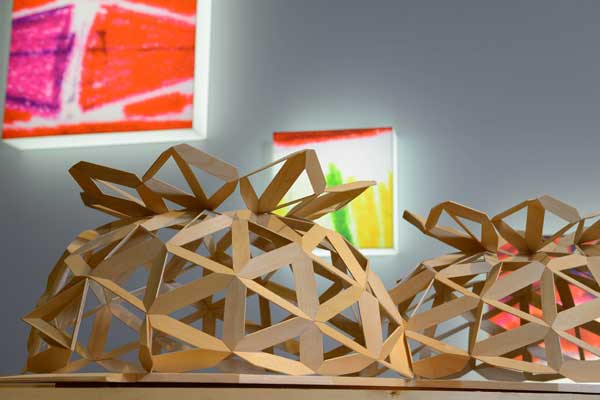
Copragi Pavilion for Expo Milan 2015
Miralles’ structures are stuffed with motifs, which, if left in less deft hands, could have turned into architectural mayhem. Instead, as seen with the Spanish Pavilion for the 2010 Shanghai Expo – which was conceived of wickerwork – the architect rethought the ways by which a traditional Spanish craft could be adapted for modern architectural use.
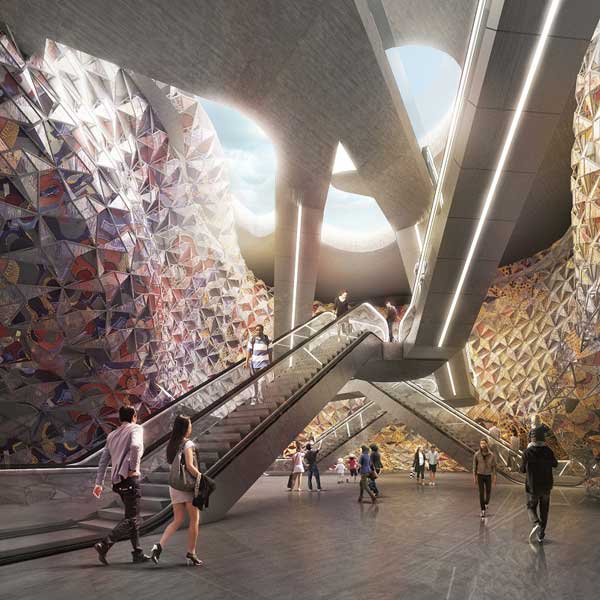
Clichy Montfermel metro station
Miralles may have passed away 15 years ago, but Taglibue is making sure that his spirit lives on. Located on the border of the Clichy-sous-bois and Montfermeil, the Clichy Montfermeil metro station will have an ambitious task – to revive a part of town deemed unsavoury to the general public as it was the scene of a series of violent riots in late 2005. A first look at EMBT’s winning proposal indicates that the station will be enveloped by a geometrically-inspired canopy. A network of escalators connects the various levels at the centre, while natural light is allowed to flood in via the open top.
INDESIGN is on instagram
Follow @indesignlive
A searchable and comprehensive guide for specifying leading products and their suppliers
Keep up to date with the latest and greatest from our industry BFF's!
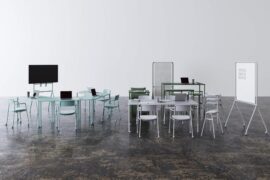
Welcomed to the Australian design scene in 2024, Kokuyo is set to redefine collaboration, bringing its unique blend of colour and function to individuals and corporations, designed to be used Any Way!
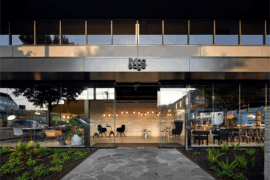
For Aidan Mawhinney, the secret ingredient to Living Edge’s success “comes down to people, product and place.” As the brand celebrates a significant 25-year milestone, it’s that commitment to authentic, sustainable design – and the people behind it all – that continues to anchor its legacy.
The internet never sleeps! Here's the stuff you might have missed
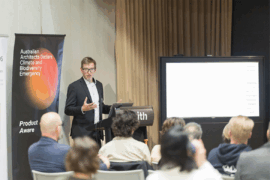
In a landscape clouded by data and greenwash, Product Aware offers architects and designers a common language for sustainability. Embraced by suppliers – including Milliken – it is setting a new benchmark for trust and bringing clarity and accountability to material specification.
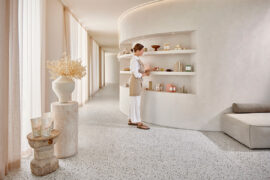
The luxury vinyl plank collection from Godfrey Hirst includes three distinctive palettes – Olympus Neo, Olympus Parquet and Olympus Stone.

The Mim x Tim show: Miriam Fanning of Mim Design joins Timothy Alouani-Roby at The Commons in Melbourne to discuss art, design on television, interior design and more.
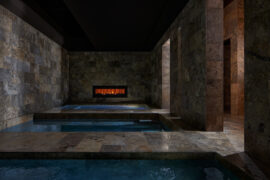
Hogg & Lamb’s Albion Bathhouse has been awarded The Health & Wellbeing Space at the INDE.Awards 2025. The project reimagines the contemporary bathhouse as an immersive architectural journey – one that restores balance through atmosphere, materiality and mindful design.